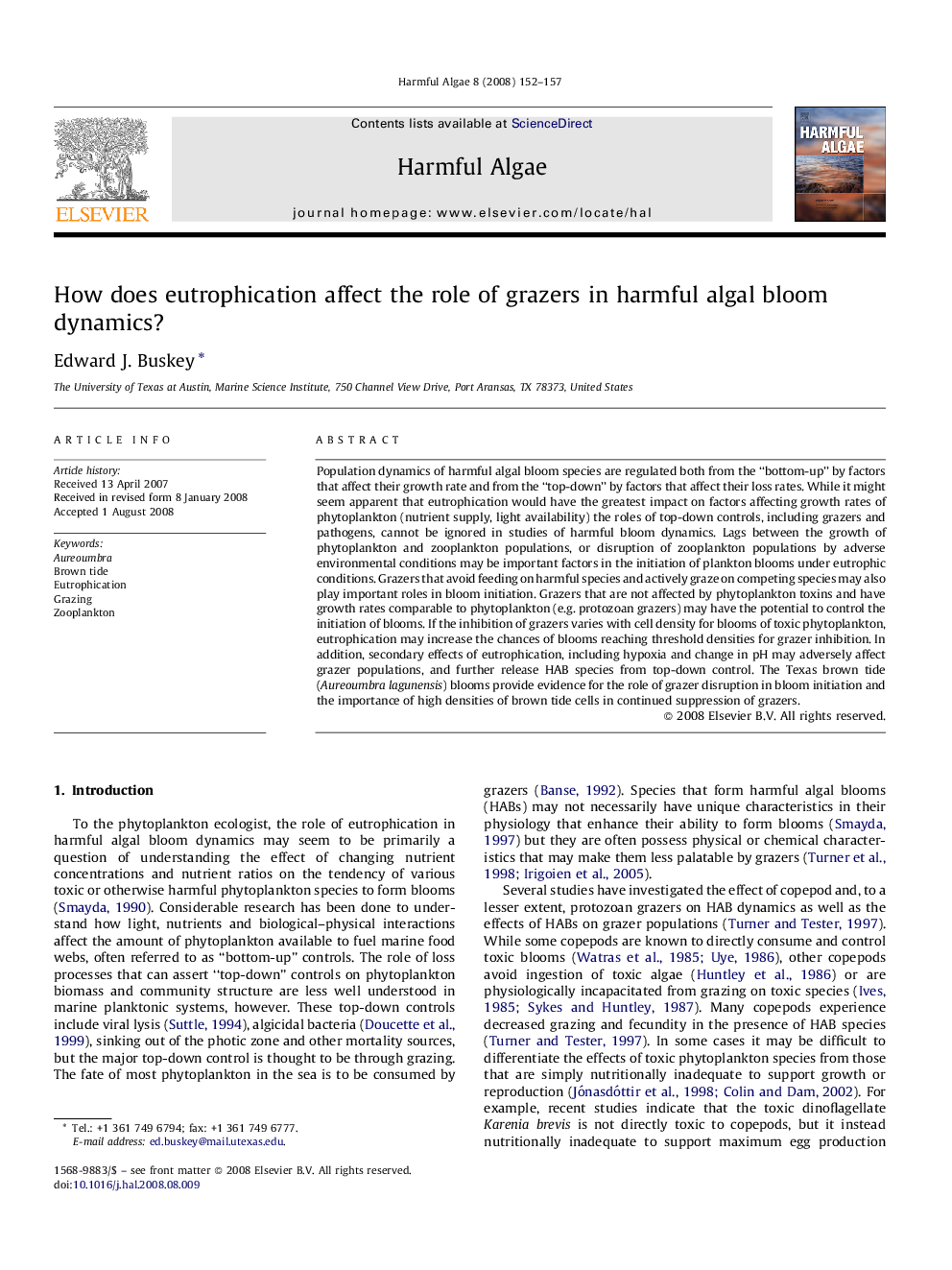| Article ID | Journal | Published Year | Pages | File Type |
|---|---|---|---|---|
| 4545927 | Harmful Algae | 2008 | 6 Pages |
Population dynamics of harmful algal bloom species are regulated both from the “bottom-up” by factors that affect their growth rate and from the “top-down” by factors that affect their loss rates. While it might seem apparent that eutrophication would have the greatest impact on factors affecting growth rates of phytoplankton (nutrient supply, light availability) the roles of top-down controls, including grazers and pathogens, cannot be ignored in studies of harmful bloom dynamics. Lags between the growth of phytoplankton and zooplankton populations, or disruption of zooplankton populations by adverse environmental conditions may be important factors in the initiation of plankton blooms under eutrophic conditions. Grazers that avoid feeding on harmful species and actively graze on competing species may also play important roles in bloom initiation. Grazers that are not affected by phytoplankton toxins and have growth rates comparable to phytoplankton (e.g. protozoan grazers) may have the potential to control the initiation of blooms. If the inhibition of grazers varies with cell density for blooms of toxic phytoplankton, eutrophication may increase the chances of blooms reaching threshold densities for grazer inhibition. In addition, secondary effects of eutrophication, including hypoxia and change in pH may adversely affect grazer populations, and further release HAB species from top-down control. The Texas brown tide (Aureoumbra lagunensis) blooms provide evidence for the role of grazer disruption in bloom initiation and the importance of high densities of brown tide cells in continued suppression of grazers.
